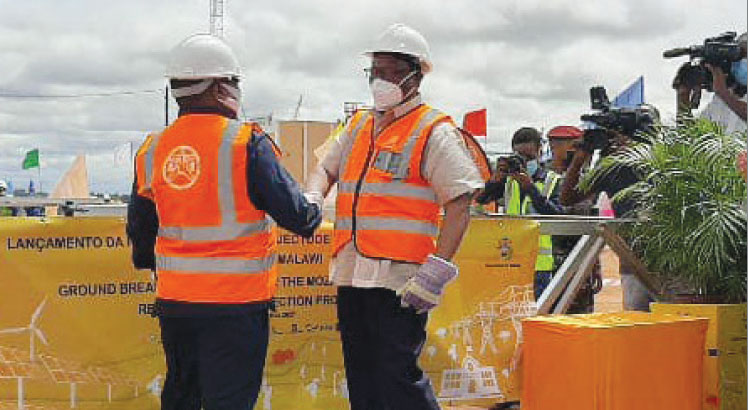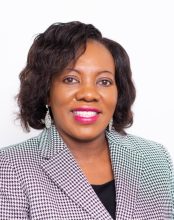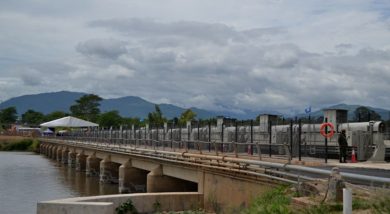Breakthrough
The thaw in relations between Malawi and Mozambique under President Lazarus Chakwera has seen Maputo granting land at Nacala Port for Lilongwe to build its own infrastructure to handle cargo.
“This is very true. President Felipe Nyusi granted a plot to His Excellency Lazarus Chakwera in Nacala in which Malawi should develop for processing of liquid and dry cargo,” confirmed Alfonso Chikuni, Malawi’s Secretary for Energy.
“We are visiting the plot tomorrow [today],” he added in an interview yesterday.
It is a diplomatic coup that not only strengthens the two countries’ bilateral ties, but could also help Malawi cut transport costs and reduce prices of goods, including fuel, fertilisers and other imports.
The development could also boost Chakwera’s standing as strong on foreign policy for pulling off a feat that five of his predecessors failed, including the late Bingu wa Mutharika whose Nsanje Inland Port dream turned into a nightmare after diplomatic missteps with Maputo.

last meeting in Nacala last year
“This has not happened by accident. It has happened because relations between Malawi and Mozambique have improved tremendously over the last three years,” said Malawi High Commissioner to Mozambique Wezi Moyo in an interview this week.
She added: “From the word go, President Chakwera was very intentional about improving relations with Maputo, so he put a lot of attention on Mozambique.
“He has travelled to this country more than any other Malawian President. Those efforts have now started bearing fruits for us Malawians.”
On the Nacala land, Lilongwe plans to build a version of Malawi Cargo Centre (MCC) in Tanzania.
Under the Malawi-Tanzania Corridor Transport System Agreement, Malawi was granted land to lease in Dar es Salaam and Mbeya where an inland port and port handling facilities were constructed and installed to facilitate movement of goods destined to or originating from Malawi.
The facilities are designed to handle both dry and wet cargo and include rail sidings, rolling stock, locomotives, warehouses, cargo handling equipment, fuel farms, fuel pipelines and housing, among others.
The facilities operate as independent units and are collectively known as Malawi Cargo Centres.
Malawi Cargo Centres Limited (MCCL) was established to manage, promote and market the assets and facilities of the MCCs. They operate as dry ports where they are a one-stop shop for the clearance and consolidation of goods. Within the premises of the MCCs are customs officials while MCCL acts as clearing and forwarding agent.
Government will have to decide on the Nacala facility’s operating model, whether to go for a public-private sector partnership or set up a fully-fledged State enterprise to optimise the direct port-rail link that Nacala provides to Blantyre and later to Lilongwe through Liwonde.
National Oil Company of Malawi (Nocma) director of operations Micklas Reuben said in an interview that the parastatal will take the lead in moving goods, fuel in its case, from Nacala via rail, having already identified Geneva-based Augusto Energy to lift 83 000 tonnes (196 million litres) of fuel through Nacala.
As a starting point, he said Nocma is currently processing 2.5 million litres in roughly 56 wagons from Nacala to its depots at Matindi in Blantyre.
“Since our rail can support 16 wagons, it means that we can offload the 56 wagons carrying 2.5 million litres within a week,” Reuben said, emphasising the efficiency of the Nacala route.
Filomene Bene, a senior executive at the Mozambique company CFM that runs railways and ports, urged Malawi to diversify port usage to Nacala because unlike Beira, which they also manage, Nacala is not very busy.
In addition, she said, Nacala’s harbour is so deep that it does not require the constant dredging that Beira, the current port of choice for the Malawi market, needs.
“I am very happy you are trying to expand your usage of the Port of Nacala because this means ships carrying your fuel can be cleared very quickly and you can avoid all these delays that cause fuel shortages in your country,” she said.
The challenge now will be convincing the Malawian private sector that the Nacala Corridor provides better value than Beira and Dar es Salaam.
Beira, according to a baseline, mid-term and end-line survey commissioned by Trade Mark East Africa released in March 2022, remains the corridor of choice for the Malawi market despite Nacala’s distance and transport cost advantages.
According to the survey, the Nacala Corridor is ranked first in terms of distance, followed closely by the Beira Corridor, then Dar es Salaam and lastly Durban.
Nacala also ranks first on average transport costs ($2 585/TEU), which is 70 percent of what it takes to use the Beira Corridor ($3200/TEU).
TEU refers to twenty-foot equivalent unit and these figures are for general cargo and not necessarily fuel.
The cost of moving goods through Nacala is also 66 percent off the cost of Dar es Salaam ($3 900/TEU) and 25 percent off the cost of the Durban Corridor ($8 920/TEU).
Despite the cost advantage, Nacala still attracts less than 10 percent (and one percent for fuel) of Malawi cargoes largely because of high transit time costs and perceptions that the railway is unreliable, according to the study.
Gedion Nyirongo, who chairs the technical committee of the Nocma board, said Nacala could help to improve the performance of Malawi’s fuel import route mix, which he said “is crucial to achieving security of supply for the country”.





